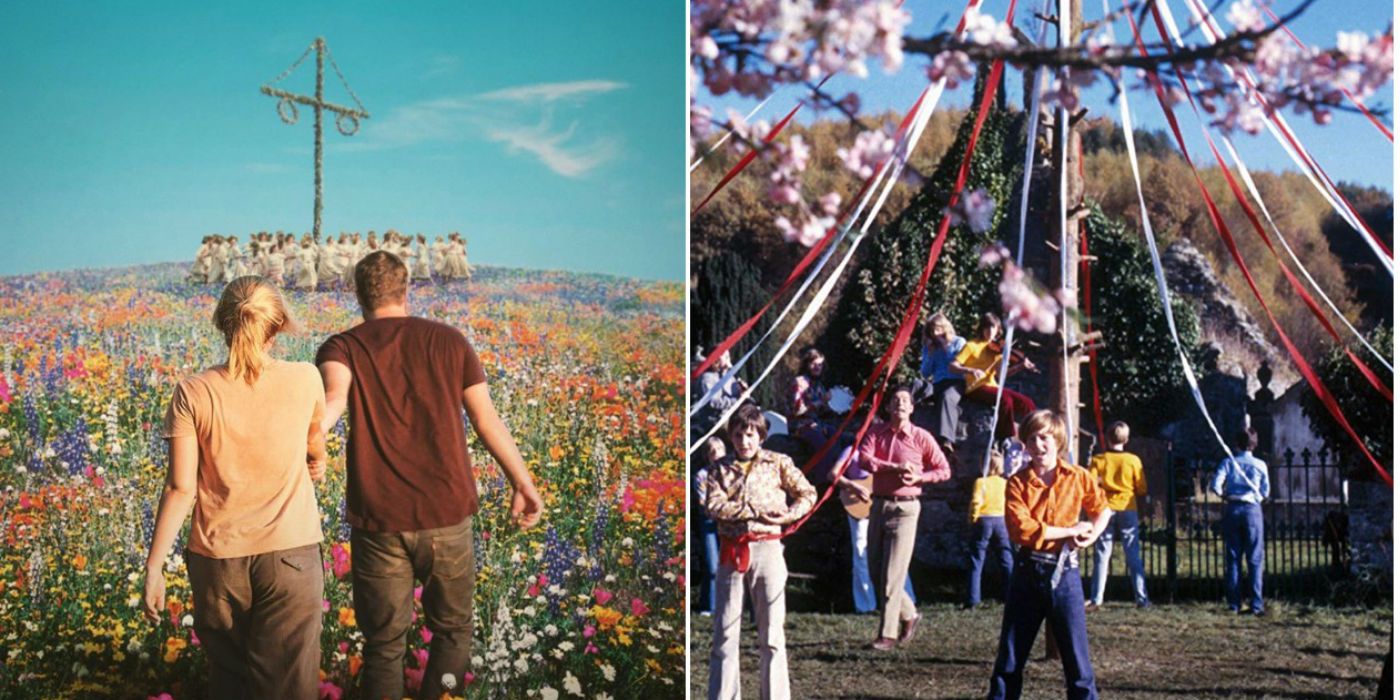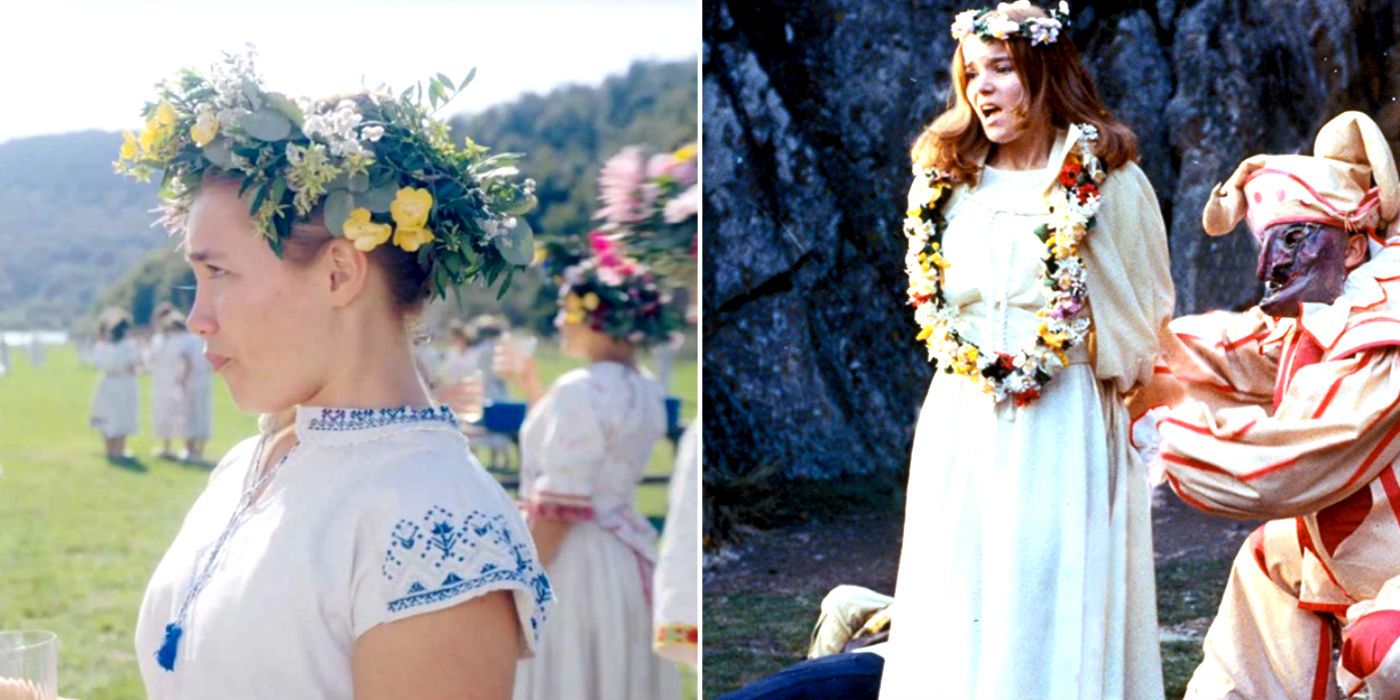Ari Aster's sleeper hit, Midsommar, showed a unique take on visceral horror that defies many of the traditional aspects of the genre itself, but despite its distinct individuality, there are more than a few connections between it and another major folk horror, The Wicker Man.
While Midsommar has been marketed as everything from a dark fairy tale to a break-up movie, it belongs predominantly in the folk horror space. Folk horror is a category that has been hit or miss over the years and has been ripe for a resurgence. The Wicker Man was originally made in 1973 and then remade with Nicolas Cage in the lead role in 2006. The plots between the films are incredibly different, but some key details between the two of them cause them to bear similarities all the same.
Aster's originality has been a breath of fresh air to the horror genre, even leading some to label his films and other similarly structured art house and cerebral horror movies as "elevated". The Wicker Man was also well-received but, in a short matter of time, faded into obscurity and is seeing a resurgence in popularly not only from the remake, but from Midsommar's existence and their overlap.
All The Connections Between Midsommar & The Wicker Man
Since Midsommar's release, various sources have cited that it's essentially a remake of The Wicker Man. This isn't necessarily true, but there are connections between the two that would cement that point, at least loosely. Due to their similarities in theme, many audiences felt sure about where Midsommar would lead, but were surprised at the differences the films shared, as they are not directly tethered to one another. Their connections, though present, were unintentional. Aster has said he was inspired by The Wicker Man, but tried to leave it from his mind when he was developing Midsommar. In some ways, Aster even tried to avoid the overlap entirely, but didn't fully manage to succeed.
The most obvious connection between Midsommar and The Wicker Man involves the ending. In Midsommar, Christian (Jack Reynor), is stuffed into a bear skin and burned inside the Hårga's ancestral temple. In The Wicker Man (1973), Howie (Edward Woodward) is put inside a large, ceremonial wicker statue of a person, and burned in effigy. In The Wicker Man (2006), this happens to Edward (Nicolas Cage). The biggest connection between the films is their central focus around a Pagan festival. In Midsommar, a group of friends are invited to Sweden to attend a festival in Pelle's (Vilhelm Blomgren) hometown. The Hårga perform rituals that disturb Pelle's American friends, including voluntary senicide. In The Wicker Man (1973), is centered around a harvest festival where a missing girl, Rowan (Geraldine Cowper), who joined the cult with her mother, May (Irene Sunters) is set to be sacrificed due to the failed harvest. In the remake, Rowan is the main character's (Edward) daughter.
Other connections include photographs of the May Queen being featured in where the outsiders stay, both the original The Wicker Man and Midsommar have a scene with a May Pole, in tribute to the festivals' Pagan heritage. The remake differs a little here, as it's centered around a fertility rite. Also, in the films, Dani (Florence Pugh) and Rowan are both crowned May Queen. There's also a connection with the bear suit in Midsommar and The Wicker Man's remake: when Edward is trying to find Rowan in the village, he disguises himself in a bear suit and joins a festival parade. While Midsommar bears a more striking similarity to the original 1973 version of The Wicker Man, there is clear overlap between all three films.


